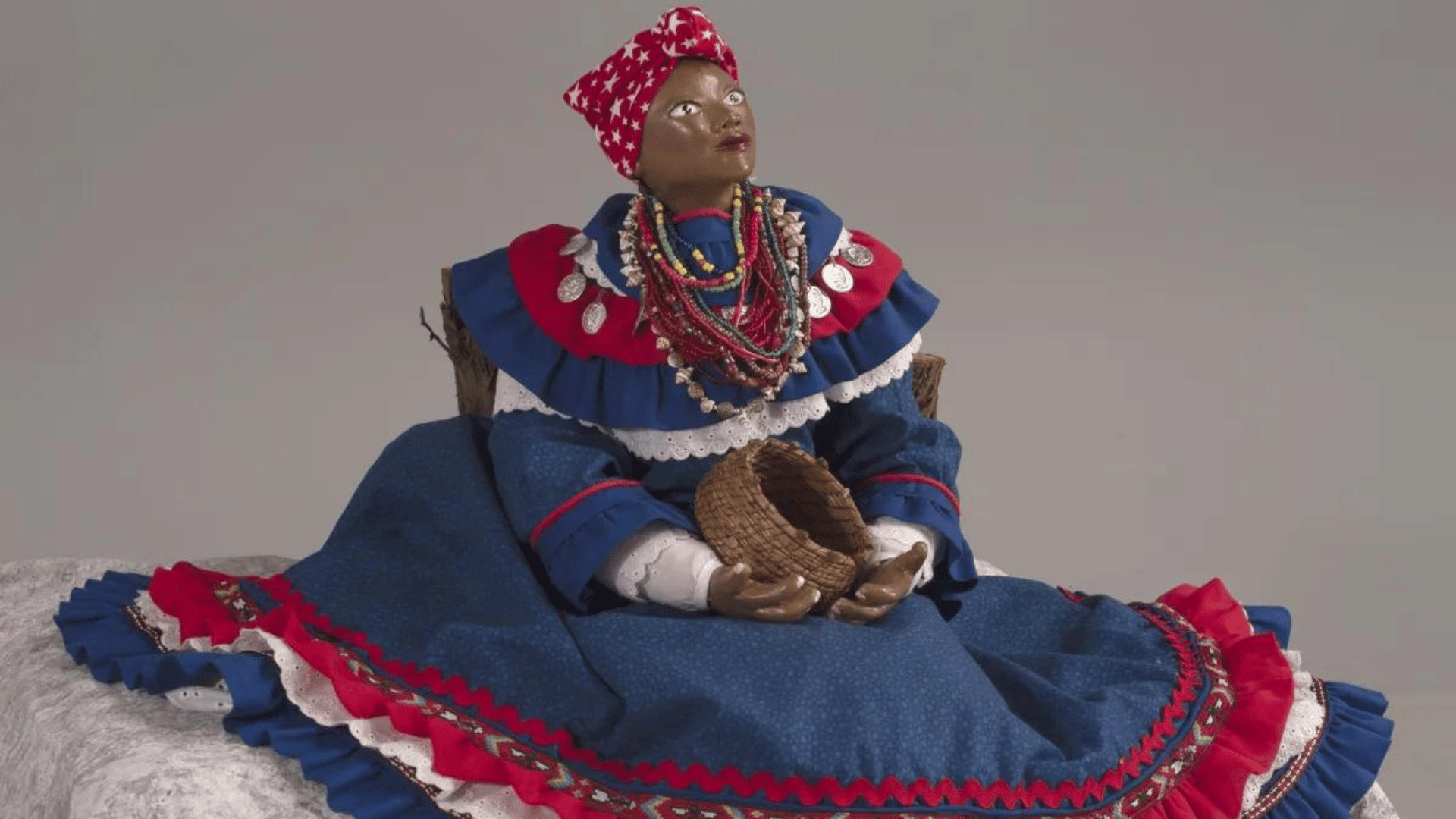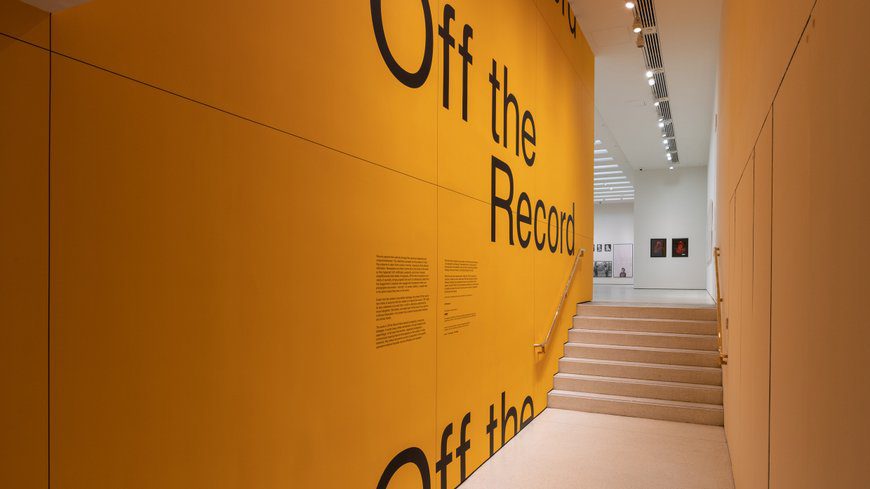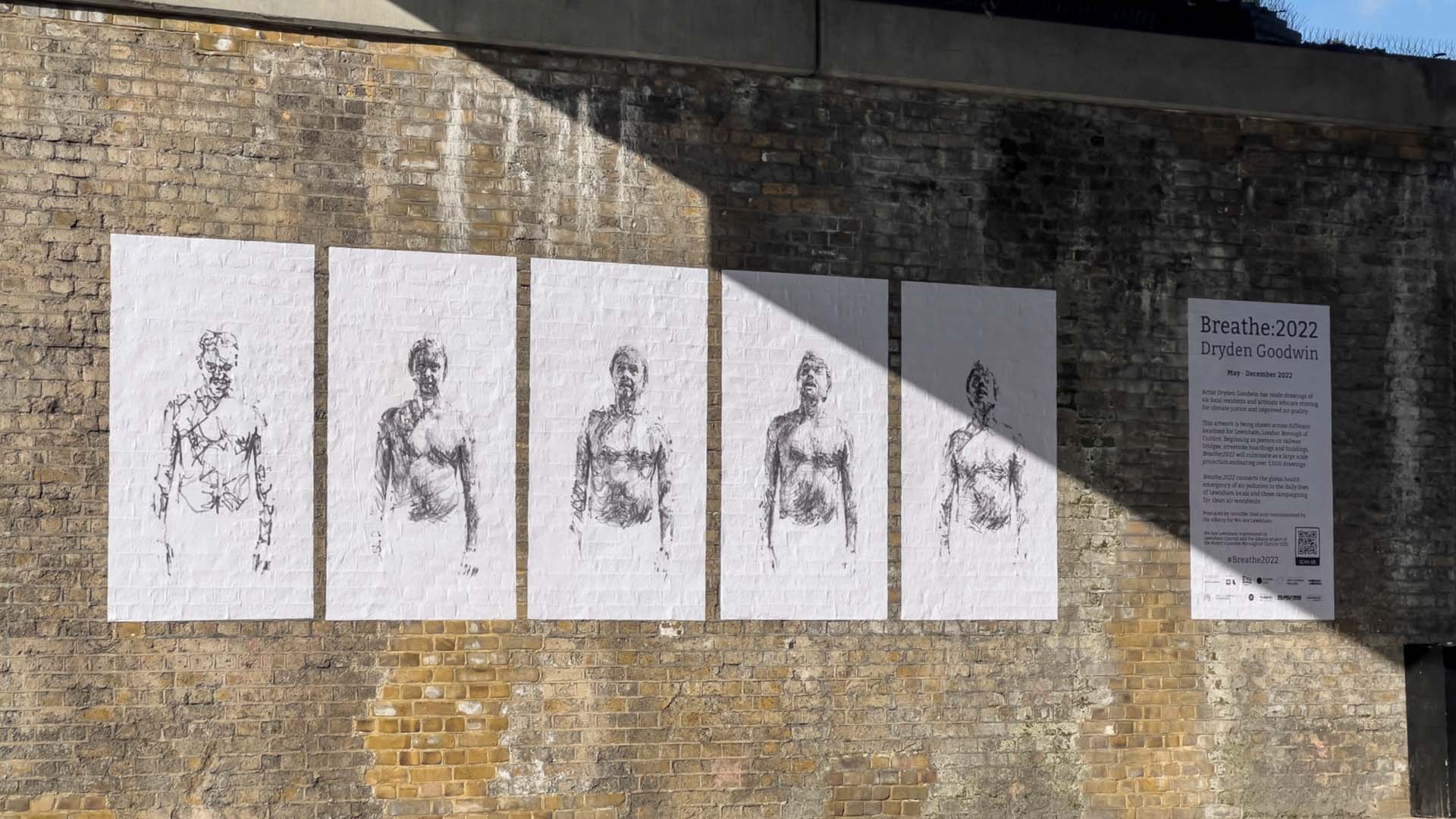Running through March 3, 2024, at City Lore in New York, the exhibition “The Calling: The Transformative Power of African-American Doll and Puppet Making” brings together the work of 26 folkloric black doll and puppet artists.

“This exhibition frames a story of women and men from across the African Diaspora who have extended the skills of sewing and other aesthetic craft traditions to create a continuum of handmade dolls and puppets ranging from toys and objects supporting children’s play and community education, to fine art for display and sale,” stated the exhibition’s lead consultant and editor Phyllis May-Machunda in the accompanying exhibition book.
The exhibition’s curator, Camila Bryce-Laporte, has worked on children, cultural, and educational programming for the Children’s Television Network and CBS Cable, and as a folklorist at the Smithsonian Institution and the Library of Congress.
“These artists could be doing any art, generally speaking, but there’s something about doing this type of figurative art, where you have to start thinking about your history, and your culture,” stated Bryce-Laporte.
Explore Tomorrow's World from your inbox
Get the latest science, technology, and sustainability content delivered to your inbox.
I understand that by providing my email address, I agree to receive emails from Tomorrow's World Today. I understand that I may opt out of receiving such communications at any time.
The exhibition is organized into several sections including Pre-Slave Trade Africa, The Trans-Atlantic Slave Trade, Slavery through Reconstruction, The Great Migration, The Civil Rights Movement, and The Post-Civil Rights Movement.
“The artists wanted to do an exhibit where they had a chance to tell the personal stories of the doll makers and also the narrative of African-American history. They also really tried to take elements of the home, bringing images of people’s homes and workspaces a little bit into the exhibit,” said Naomi Sturm-Wijesinghe, City Lore Creative Traditions Program director.
One of the dolls created by Bryce-Laporte represents Susan July, who “was (a) Black Seminole who fought in the Seminole Wars alongside her husband John Horse.” Horse was also a famed diplomat, warrior, and tactician.
“Black women not only ran their household(s), but other people’s households, and they were critical to the development of this country. Black and Indigenous women shaped not only this country, but this hemisphere. Also, many Africans carry Indigenous genes. The other thing is, as much as we have been persecuted, they have been persecuted. What happened to them was genocide. I want to give them as much of a platform as possible,” stated Bryce-Laporte, who is very intentional about highlighting both Black and Indigenous women in her work.
Quiltmaking is also heavily featured in the show, including creations by Laura Gadson – visual artist, quilter, doll artist, and gallery owner. One of her installations, for example, depicts a choir of Black women in kente regalia.
Gadson spoke on the possibility of a resurgence in quilting, stating, “A lot of people forget that there are certain arts that always have a resurgence. Quilts had a resurgence in 1976. They also had it in the ’90s and it follows till today, so there are a lot of modern quiltmakers.”







